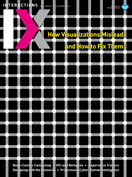Authors:
Gusa Armagno
During my almost three-year journey leading an HCI project aimed at developing non-traditional user interfaces for children with cerebral palsy, I learned something critical: All the specialized literature on HCI and disability I had read had not prepared me for the extent and level of the challenges I faced over the course of the project. Insights Not only did those challenges give me insights into how to plan and coordinate a project involving HCI research in the field of disability, but they also changed my view about the phenomenon of disability, revealing why it is critical for scientists…
You must be a member of SIGCHI, a subscriber to ACM's Digital Library, or an interactions subscriber to read the full text of this article.
GET ACCESS
Join ACM SIGCHIIn addition to all of the professional benefits of being a SIGCHI member, members get full access to interactions online content and receive the print version of the magazine bimonthly.
Subscribe to the ACM Digital Library
Get access to all interactions content online and the entire archive of ACM publications dating back to 1954. (Please check with your institution to see if it already has a subscription.)
Subscribe to interactions
Get full access to interactions online content and receive the print version of the magazine bimonthly.






